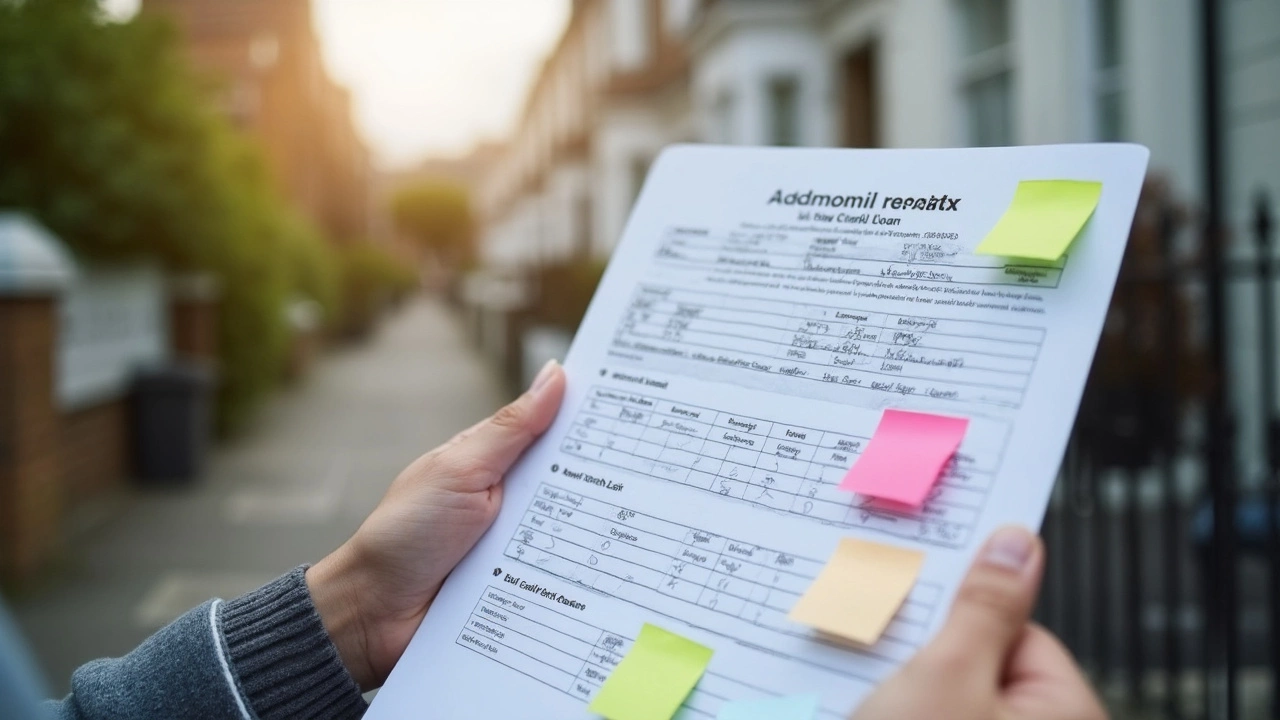What Credit Score Do You Need to Buy a $300k House?
 May, 12 2025
May, 12 2025
So you’ve got your eye on a $300,000 house. Feels great just saying it, right? But now you’re wondering if your credit score is high enough to actually make it happen. Here’s the real deal—you don’t need perfect credit, but lenders do care a lot about your score. For most mortgages, the magic number starts at 620, but different loan types set their own bars.
FHA loans, which a lot of first-timers go for, let you in with a score as low as 580 if you can swing a 3.5% down payment. Conventional loans usually want at least a 620, but a bigger score gets you better rates. The higher it is, the less you pay over time. It’s not just about getting approved; it’s about not overpaying every month.
- Breaking Down Credit Score Requirements
- How Credit Score Impacts Loan Options
- Beyond Numbers: What Lenders Want
- Tips to Boost Your Approval Odds
Breaking Down Credit Score Requirements
Your credit score is basically a three-digit number that shows lenders how likely you are to pay your mortgage on time. When it comes to buying a $300k house, not all loans play by the same rules. Here's what lenders are actually looking for with the most common types of loans:
- FHA Loans: These are great for first-timers. You’ll need at least a 580 score to put down the minimum 3.5%. If you’re below that—between 500 and 579—you can still try, but your down payment jumps to 10%.
- Conventional Loans: These are the most common. The magic number most lenders want is 620 or higher. The better your score, the better your interest rate and the less you’ll pay over the life of the loan.
- VA Loans: If you’re active-duty military, a veteran, or eligible family, you can look into this option. Officially, there’s no set minimum score, but lenders like to see at least 620.
- USDA Loans: For homes in qualifying rural areas, these loans usually want at least a 640 score. The approval process is a bit more automated, so your score matters.
If you’re curious how score ranges shake out, check this table. It’s pretty eye-opening:
| Loan Type | Minimum Credit Score | Down Payment |
|---|---|---|
| FHA | 580 (3.5% down), 500 (10% down) | 3.5% or 10% |
| Conventional | 620 | As low as 3% (varies by lender) |
| VA | Usually 620 | 0% |
| USDA | 640 | 0% |
So what does this all mean? If your score is over 620, you’re in good shape for the most common loans, and things only get easier as your score goes up. But if you’re a little below that, there are still some options—you just might need to save up more for a down payment. Lenders also check the rest of your financial info, but your score is the first hurdle in the race.
How Credit Score Impacts Loan Options
Your credit score basically decides which mortgages you can even consider. It shapes not just your choices but also how much you’ll spend out of pocket each month. Here’s how it all shakes out for a $300k house:
- FHA Loans: These are built for folks without perfect credit. You can get in with a score as low as 580 (or sometimes even 500 if you have a bigger down payment—think 10%). The trade-off is you'll pay for mortgage insurance every month, adding to your payments.
- Conventional Loans: These want a minimum 620 credit score. If you’re above 740, lenders really start rolling out their best interest rates and smallest down payments (as little as 3%).
- VA Loans: Only for veterans and some military families. They don’t set a hard credit minimum, but scores above 620 usually breeze through.
- USDA Loans: You need a 640 for these rural and some suburban home loans. They ask for zero down but are picky about location and income.
To see how much your credit score tweaks the cost, check this out:
| Loan Type | Min Credit Score | Typical Down Payment | Interest Rate Range* |
|---|---|---|---|
| FHA | 580 | 3.5% | 6.25% - 7.5% |
| Conventional | 620 | 3% - 20% | 5.75% - 7.25% |
| VA | None (620+ preferred) | 0% | 5.75% - 6.75% |
| USDA | 640 | 0% | 5.75% - 6.75% |
*As of early 2025, rates bounce around every month. Your own history will skew the exact number.
Every bump of 20 to 40 points in your credit score can save you thousands by dropping your interest rate. For example, if you have a 660 versus a 740, you could pay about $150 more a month on a $300k loan. That’s enough to give Buster a new bed every month—and still have change left over.
If your score is shaky right now, don’t freak out. It doesn’t instantly rule you out, but goes a long way in deciding what options are on the table—and how much you’ll sweat those monthly payments.

Beyond Numbers: What Lenders Want
Your credit score is just part of the story. Lenders actually look at the whole financial picture before saying yes to your home loan. They want to know you can pay them back, plain and simple. Here’s what else they put under the microscope:
- Income and Job Stability: Lenders want to see steady paychecks. Usually, two years at your current job is a solid sign for them.
- Debt-to-Income Ratio (DTI): This is a big one. Most banks want your monthly debt payments to be less than 43% of what you make before taxes. Lower is always better, though.
- Down Payment Amount: If you can drop more cash up front, that puts you ahead. It makes you less risky to the bank and sometimes gets you better rates.
- Assets and Savings: Proof of savings—like bank statements—shows them you have backup if life throws a curveball.
- Past Payment History: If you’ve skipped out on bills or had late payments, they’ll see that. Recent late payments can be red flags.
“A credit report tells only part of the story. We need to verify steady income, reasonable debt levels, and a track record of on-time payments before approving a mortgage.” — Freddie Mac, official lending guide
Here’s a quick look at some data lenders care about beyond your credit score:
| Factor | Typical Requirement | Why It Matters |
|---|---|---|
| Employment History | 2+ years in same job/field | Shows stability |
| Debt-to-Income Ratio | Max 43% | Measures ability to pay loan |
| Down Payment | 3%–20% of price | Lower risk for lender |
So, even if you have the right credit score, lenders want a big-picture look. Come prepared with pay stubs, bank statements, and proof of any money you’re putting down. This stuff can sometimes make up for a less-than-amazing score—so keep it all ready.
Tips to Boost Your Approval Odds
Lenders check more than your credit score. They look at your whole financial picture, but there are a bunch of steps you can take right now to make yourself look solid. Getting ready early can seriously improve your shot at a mortgage approval for a $300k house. Here’s what actually moves the needle:
- Check your credit report for mistakes. The government lets you do this free at annualcreditreport.com. Wrong info can drag your score down for no reason. Spot anything weird? Dispute it—people do it all the time and it works!
- Pay every bill on time, every time. On-time payments count for around 35% of your credit score. Even one late payment can mean the difference between a loan approval and a big fat no.
- Attack high credit card balances. Try to keep your credit utilization below 30%. If you’re carrying a $3,000 balance on a $5,000 limit, pay that down to under $1,500 and you’ll see your score pop up.
- Avoid applying for new credit cards or loans. Every time you do, it dings your credit with a "hard inquiry." Too many in a short span looks risky to lenders.
- Save up for a bigger down payment if you can. If you can bring even 10% instead of 3.5%, lenders start to see you as less of a risk, and you can avoid paying for private mortgage insurance.
- Keep your job steady. Lenders want to see at least two years of stable work, ideally with the same employer or field. Don’t hop jobs at the last minute if you can help it.
Here’s a quick comparison of how different credit scores can impact your interest rates and payments for a $300,000 home loan. It might surprise you how much your credit score really matters:
| Credit Score | Approx. Interest Rate (30-Year Fixed, May 2025) | Monthly Payment (Principal & Interest) | Total Interest Over 30 Years |
|---|---|---|---|
| 760+ | 6.6% | $1,922 | $392,000 |
| 700-759 | 7.0% | $1,995 | $418,000 |
| 620-639 | 8.5% | $2,308 | $531,000 |
Bumping your score up even a little can save you hundreds every month—cash you could use for a home repair, a vacation, or Buster's next giant bag of treats (my dog would definitely approve). Start with these steps, keep your spending in check, and you’ll be in way better shape when you talk to a lender.